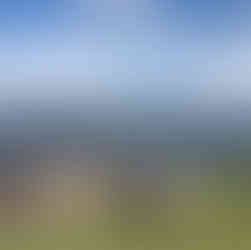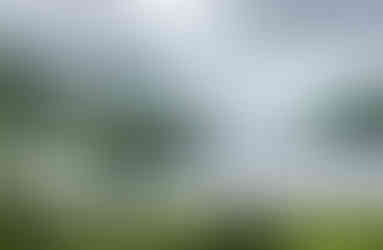Scotland Route 500 - Part 4 Russian Arctic Convoys, Sunsets and a Bob Marley Connection
- Caroline & Garry

- Mar 25, 2019
- 6 min read
Updated: Nov 26, 2019
Now leaving Viking Country known as Assynt, which is Norse for Rocky Ridge, we pass Loch Assynt as we retrace our steps a short way to resume our travels south. We see Cul Mor and Cul Beag and as we wind our way towards Ullapool the views over Isle Martin and Loch Kainaird blow us away. In the distance you can see Horse Island, Carn nan Sgeir and all the wonderfully named Summer Isles.

Our first view of Ullapool and we could be somewhere in Scandinavia, with its colourful houses jutting out into Loch Broom. A short stop here for the obligatory coffee and a trip to a local art gallery to admire the pieces and I don’t know whether it’s my imagination but the air smells clearer and fresher here somehow.
Travelling on we arrived in Poolewe where we had booked a few nights at the Inverewe Camping and Caravaning Club Site not far from the Gardens of the same name and opposite Loch Ewe. This site had really friendly and helpful wardens with clean facilities that did require a little updating (the facilities that is not the Wardens!!) . Luckily we were allocated a pitch with an uninterrupted view of the Loch.
www.campingandcaravanningclub.co.uk
One thing I would like to quickly mention is the mass of Cottongrass we have seen on our travels through the Highlands. This wonderful little plant belongs to the Sedge Family and is in fact not cotton or grass. Used during the First World War as a dressing for wounds it thrives on the peaty soil of the uplands and moorlands and you come across it everywhere.

Whilst in Poolewe we visited Inverewe Gardens owned by The National Trust for Scotland. Founded by Osgood Mackenzie and his daughter Mairi, this windswept and once barren peninsular is now a lovely, colourful and relaxing place to explore. Well worth a visit. The house is also open for viewing.
We also found the wonderful Russian Arctic Convoy Museum in Aultbea. Still in its infancy this is a wonderfully interesting collection, where you can also follow your family history if you have ancestors/relatives who were involved in this often overlooked part of the war. At the height of the use of the Naval Defence Bases here there were over 3000 people stationed in this remote part of Scotland. If you travel to Cove along the B8057 you can see the remains of the Base and Gun emplacements.
It was whilst we were here that Storm Hector hit Scotland, which resulted in a day and a night with the roof down and lots of reading and sketching whilst the worst of the storm passed. Hygge performed beautifully with only a few hours of rocking from side to side. It was not our first experience of bad weather in Hygge and Storm Hector certainly wasn’t a match for the storm we had whilst camping on a cliff site in Cornwall! I am pleased to say.
Pitched opposite the Loch and facing West meant that we experienced some of the most beautiful sunsets we have ever seen. One particular evening brought the whole campsite to a standstill as everyone stopped what they were doing to enjoy the spectacle.


Whilst here we walked up to Flowerdale Waterfall in Flowerdale Glen owned by the MacKenzies of Gairloch. We also drove to Henderson Point, stopping off in Badachro with its wonderful moored yachts in the bay and the ideally situated and popular Badachro Inn.
Having read about The Mountain Coffee Company - Gairloch, in The Wild Scotland Book we decided we must visit and experience it ourselves. This eclectic place really delivers on the coffee and cake front. With the coffee being supplied by Rohan Marley’s Coffee Company (you guessed it son of Bob)– we loved it. They also have an interesting Book Shop with many unusual titles and a vast number of Scottish Authors’ works available. Gairloch also has a library, tourist information and coffee and gift shop in a modern building on the main road. (Find them on Facebook)
One last thing worth mentioning, is the fish and chip van that pulls up along side the campsite once a week,where it appears to plug in to a local residents mains! This produced a steady stream of cars parking up and forming a queue, of sorts, we didn’t realize how many people lived in the area until that point, but I guess when your nearest large supermarket is 1.5 hours away good fish and chips are a treat. And they were great fish and chips.
Reluctant yet again to move on, our route took us past the end of Loch Maree and her wooded islands, making our way back towards Inverness via the beautiful and wonderfully named Victorian Spa town of Strathpeffer. (Unfortunately due to a recurrence of my vertigo during the last few days in Clachtoll we decided it was best to make our way homeward rather than continue as we had planned down to the Applecross Peninsular, but we know we will be back!)

One thing we did come to understand when talking to local people in this remote part of Scotland, was how finely balanced the economy is. Very reliant on tourism and a somewhat short tourist season, life can sometimes be very tough. We hope that if you are reading this and thinking of visiting you might bear that in mind and support the local business people when you can, helping them to thrive so they continue to live there and we can continue to visit and all enjoy this absolutely stunning part of Scotland.
Back in Inverness we had luckily managed to get a pitch on the Caravan and Motorhome Club Site not far from Culloden Battlefield Centre. This is a very well-kept and clean site with really helpful wardens and the usual CMC facilities.
Naturally we couldn’t miss a visit to the Culloden Battlefield Centre and we were not disappointed. The centre has a really engaging interactive exhibition with live presentations and guided tours around the site of the battle. The bookshop is full of books about the conflict and all the family names of people involved, a must for family historians like me.
Mourn, hapless Caledonia, mourn
Thy banish’d peace, thy laurels torn!
Thy sons, for valour long renown’d
We slaughter’d on their native ground!
Tobias Smollett, The Tears of Scotland. 1746
We managed to explore along this coast a short way with a visit to Brodie Castle (NT Scotland), the home of the daffodil and the Victorian Seaside Town of Nairn.
We had a wonderful day out at Fort George. The size of 40 football pitches and still a base for the Black Watch, this amazing Fort boasts 1 mile of ramparts and a beautiful chapel and it all took 22 years to build. There are a couple of museums, various re-enactments and talks throughout the day and recreated barracks through the ages. A really enjoyable day and the views over to Chanonry Point are spectacular.
On our drive southwards we decided to return along the east of Loch Ness on the B852/862 which hugs the loch meandering through woods and a little settlement called Foyers, where there is a wonderful café called Camerons.
Travelling down the A82 alongside the wonderful sounding Loch Lochy we took a slight detour over to Glenfinnan, having been fortunate to travel on the Fort William-Mallaig, Jacobite Steam Railway some years previously, we thought it would be interesting to see the Glenfinnan Viaduct from the ground, an amazing feat of engineering! We were also lucky to see two trains steaming over it too.
We were surprised by the number of Harry Potter fans from all over the world who had come to this spot, as part of their personal pilgrimage. The views from the hillside over Loch Shiel and the Monument are beautiful, even though we were jostling for space with these intrepid fans.
For our final night in Scotland we decided to make a return visit to a lovely hotel overlooking Ben Nevis, just outside Spean Bridge. Having previously stayed at this relaxing and homely hotel on our return from the Hebrides some years ago, we knew we would eat wonderful meals and sleep in a comfortable bed and we weren’t disappointed. The Old Pines was a wonderful way to end our stay in Scotland.

As we crossed the border back into England we both agreed that it wouldn’t be long before we were back. When trying to pinpoint a highlight from our tour we found it impossible to point to one thing, because we were constantly surprised and overwhelmed by the sheer raw beauty of the landscape, the friendliness of the people we met along the way, the history and stories behind some of the places we visited and most of all the passion, love and pride the locals had for the place they call home. This was exemplified when a class of children from a Glencoe School were asked what Glencoe meant to them and one of them replied, “Everything”.





















Commentaires